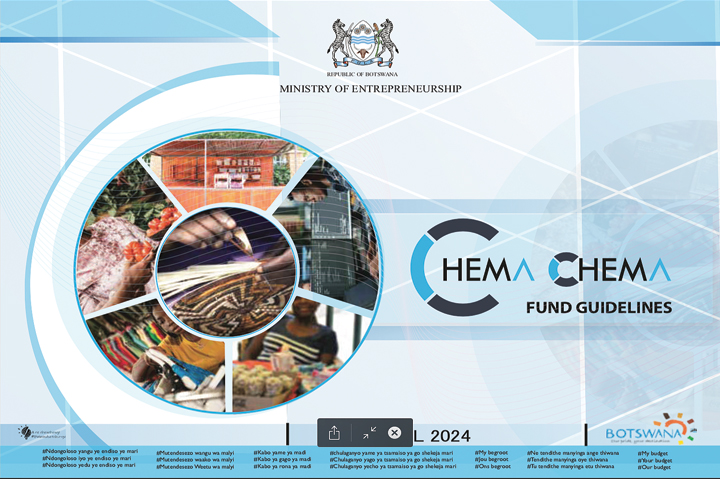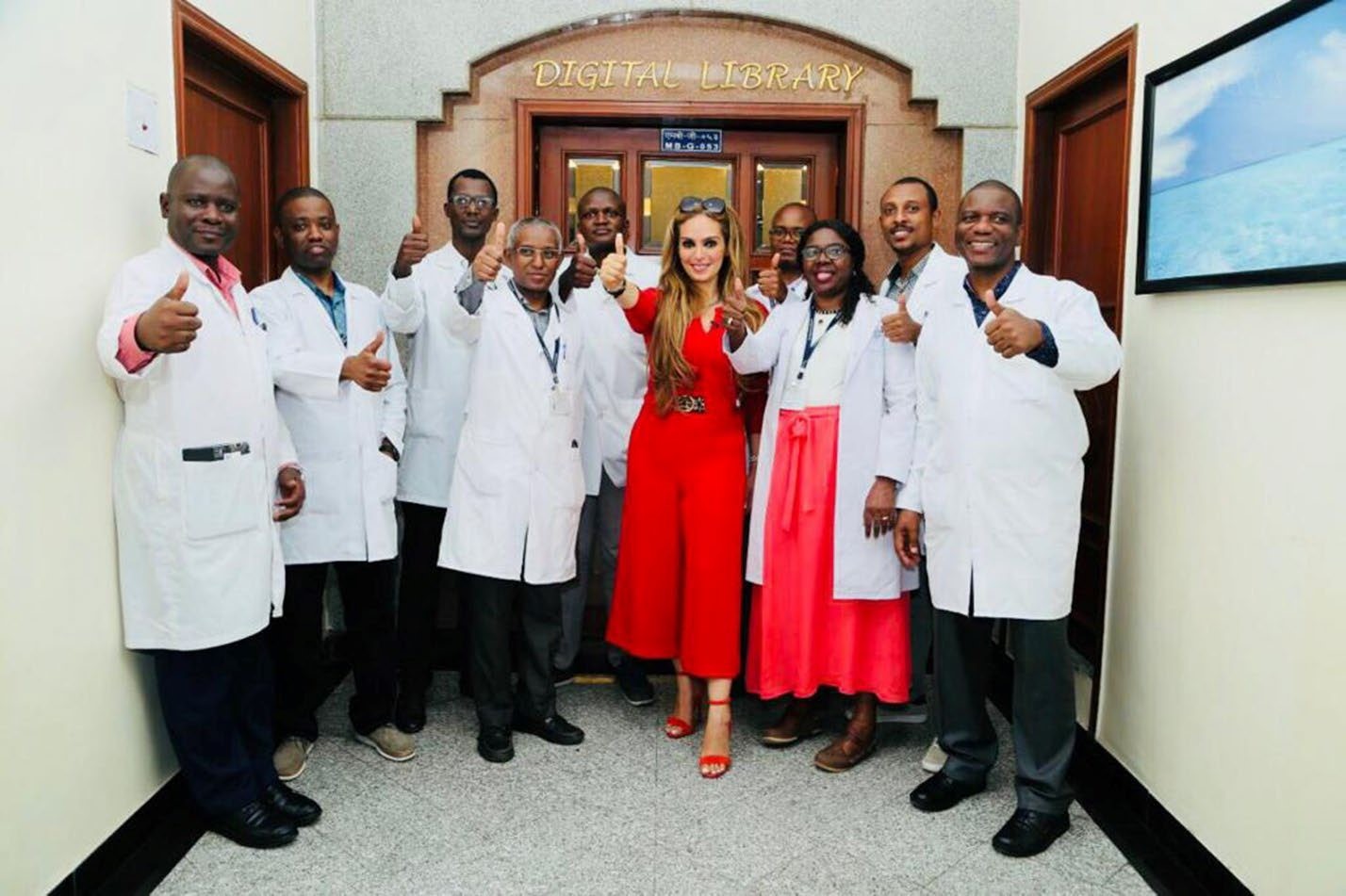Natural diamonds forever and forevermore – De Beers
Among the ‘Top 30 Enviable Celebrity Engagement Rings’ revealed by the biggest jewelry publication Jeweller, there is a Botswana cushion-cut 5 carat natural diamond worth P3 million, which was put by Prince Harry of Wales on his then actress girlfriend Meghan Markle, around this time two years ago.
This is one of the latest much hyped Botswana linked diamond story intertwining with the showbiz world of Hollywood, as this country becomes part of the glitz and glamour pages. In this royal ring, the Botswana story alone is not enough, there is another vintage description of it; the 5 carat diamond is also rounded with two 0.75-carat round diamonds from Prince Harry’s mother, Princess Diana’s private collection.
Diamonds, the stone also attracts abundance, strength, power, courage, fortitude, creativity, imagination, purity, harmony, faithfulness, and innocence, increased feelings of self-respect and love, and relationships full of pure love. What is worth or more valuable than the sparkle and romance that comes with Prince Harry’s engagement ring is that it boosted this country’s diamond marketing and public relation machinery. Botswana diamonds also have an emotional attachment coming with their production; they are not just sold for fantasy but they are dug out naturally and are as natural as they come.
International media says the ring was more fitting not only to Markle but for the fact that the jewel has connection with Botswana, which is the second biggest supplier of conflict-free natural diamonds, according to data from the Kimberley Process Certification Scheme. The Kimberley Process (KP) Certification Scheme helps control rough diamond trade among 81 countries who have joined forces to eliminate conflict diamonds, ensuring transparency and prohibiting diamond trade with countries not part of the initiative
"Choosing a diamond from Botswana speaks to Prince Harry and Meghan’s shared commitment to social and environmental responsibility, as Botswana diamond mining has contributed to transforming Botswana into one of Africa’s most prosperous economies,” Business Insider said just after the royal engagement. The publication further says, "Botswana diamonds are also sourced from mines that follow internationally recognized labor and environmental standards."
The most asked question: Natural diamond vs threat of synthetics?
At any diamond event or occasion the most asked question is whether natural diamonds will withstand the advent of synthetic or lab made diamonds. Big industry players always have one common response; synthetic diamonds will never take away the emotionality and socio-economic factor that comes with natural diamonds.
This week during the De Beers Diamond Conference, CEO of the giant mining company Bruce Cleaver answered the most asked question. Cleaver downplayed synthetics as just for “fashion, fun and lighthearted”, when compared to emotions, luxury and economic impact that comes with natural diamonds. Cleaver told journalists who asked if he is threatened by lab made diamonds that De Beers remains a “natural diamond business.” De Beers has always been against production of man-made diamonds but last year May it made a U-turn on the decision, and started venturing into synthetics.
Having 130 years in the diamond industry, De Beers coined a marketing tag “A Diamond is Forever” in 1947, as a crusade to counter the production of artificial diamonds. It is a natural belief that the big threat that comes with synthetic diamonds on the traditional industry is that some synthetics are falsely marketed as natural. The US’s Federal Trade Commission (FTC) requires lab-grown diamonds to be marked.
At the same Diamond Conference, coming from De Beers’ rival, Lucara Managing Director Naseem Lahri concurred with Cleaver saying synthetics will never be a threat. Lucara brands itself as “producers of large, high quality, Type IIA diamonds in excess of 10.8 carats.” Lucara also produced the historic 1,109 carat ‘Lesedi La Rona’ (second largest gem diamond ever recovered) and the 813 carat Constellation (sold for a record P631 million or US$63.1 million).
“As a lady I can tell you how much diamonds mean to me. As for the threat that comes with synthetic diamonds, De Beers has done well in selling emotions. Let us sell how diamonds are produced. Botswana produced diamonds are well branded and produced ethically. We (natural diamonds producers) will always have a market for diamonds (natural),” said Lahri.
Synthetics threat is forever
Some believe lab-grown diamonds are the next generation of diamonds and allow the consumer peace of mind in knowing there is no forbidden or unethical labor sources behind the production. Natural diamond production, for years has been stained with conflicts, political crises and civil wars. There has been bad publicity linked with production of diamond as the media coined them ‘blood diamonds.’
Experts believe the real threat that comes with lab diamonds, when overlooking romantic value and being pragmatic, is that they are 40-60 percent more affordable than a mined diamond. A research says synthetic variants are around 15-25 percent cheaper. Diamond expert Paul Zimnisky says the average discount of a 1 carat generic lab-grown diamond to a natural diamond had widened to 42 percent by mid-November from 29 percent in January.
When giant diamond producer De Beers renegaded from its anti-synthetics stance last year May, something happened in the world of diamonds, a 1 carat synthetic diamond cost about $4,200 while an equivalent mined gem sold for $6,000. De Beers has always sold its synthetics for $800 a carat. Synthetics are produced in a laboratory at high heat and pressure putting together carbon atoms. Production costs are said to have lowered to make the artificial diamonds and experts estimate that to produce a synthetic could be as little as $300 a carat from $4 000 over past decades.
Zimnisky says while synthetic diamonds make 3.5 percent of the world’s diamond jewelry, the share could grow six times or more in the next four years. The world’s biggest consumers of diamonds; India and China are now looking into synthetics and it becomes a threat to economies of natural diamond producing countries like Botswana. China is now said as the biggest maker of synthetic diamonds used as cutting tools. It is said India is number two in production of synthetic diamonds, but China is said to be a bigger player making 56 percent of the world’s lab-made diamonds.
News
Nigerians, Zimbabweans apply for Chema Chema Fund

Fronting activities, where locals are used as a front for foreign-owned businesses, have been a long-standing issue in Botswana. These activities not only undermine the government’s efforts to promote local businesses but also deprive Batswana of opportunities for economic empowerment, officials say. The Ministry of Trade and Industry has warned of heavy penalties for those involved in fronting activities especially in relation to the latest popular government initiative dubbed Chema Chema.
According to the Ministry, the Industrial Development Act of 2019 clearly outlines the consequences of engaging in fronting activities. The fines of up to P50,000 for first-time offenders and P20,000 plus a two-year jail term for repeat offenders send a strong message that the government is serious about cracking down on this illegal practice. These penalties are meant to deter individuals from participating in fronting activities and to protect the integrity of local industries.
“It is disheartening to hear reports of collaboration between foreigners and locals to exploit government initiatives such as the Chema Chema Fund. This fund, administered by CEDA and LEA, is meant to support informal traders and low-income earners in Botswana. However, when fronting activities come into play, the intended beneficiaries are sidelined, and the funds are misused for personal gain.” It has been discovered that foreign nationals predominantly of Zimbabwean and Nigerian origin use unsuspecting Batswana to attempt to access the Chema Chema Fund. It is understood that they approach these Batswana under the guise of drafting business plans for them or simply coming up with ‘bankable business ideas that qualify for Chema Chema.’
Observers say the Chema Chema Fund has the potential to uplift the lives of many Batswana who are struggling to make ends meet. They argue that it is crucial that these funds are used for their intended purpose and not siphoned off through illegal activities such as fronting. The Ministry says the warning it issued serves as a reminder to all stakeholders involved in the administration of these funds to ensure transparency and accountability in their disbursement.
One local commentator said it is important to highlight the impact of fronting activities on the local economy and the livelihoods of Batswana. He said by using locals as a front for foreign-owned businesses, opportunities for local entrepreneurs are stifled, and the economic empowerment of Batswana is hindered. The Ministry’s warning of heavy penalties is a call to action for all stakeholders to work together to eliminate fronting activities and promote a level playing field for local businesses.
Meanwhile, the Ministry of Trade and Industry’s warning of heavy penalties for fronting activities is a necessary step to protect the integrity of local industries and promote economic empowerment for Batswana. “It is imperative that all stakeholders comply with regulations and work towards a transparent and accountable business environment. By upholding the law and cracking down on illegal activities, we can ensure a fair and prosperous future for all Batswana.”
News
Merck Foundation and African First Ladies mark World Health Day 2024

Merck Foundation, the philanthropic arm of Merck KGaA Germany marks “World Health Day” 2024 together with Africa’s First Ladies who are also Ambassadors of MerckFoundation “More Than a Mother” Campaign through their Scholarship and Capacity Building Program. Senator, Dr. Rasha Kelej, CEO of Merck Foundation emphasized, “At Merck Foundation, we mark World Health Day every single day of the year over the past 12 years, by building healthcare capacity and transforming patient care across Africa, Asia and beyond.
I am proud to share that Merck Foundation has provided over 1740 scholarships to aspiring young doctors from 52 countries, in 44 critical and underserved medical specialties such as Oncology, Diabetes, Preventative Cardiovascular Medicine, Endocrinology, Sexual and Reproductive Medicine, Acute Medicine, Respiratory Medicine, Embryology & Fertility specialty, Gastroenterology, Dermatology, Psychiatry, Emergency and Resuscitation Medicine, Critical Care, Pediatric Emergency Medicine, Neonatal Medicine, Advanced Surgical Practice, Pain Management, General Surgery, Clinical Microbiology and infectious diseases, Internal Medicine, Trauma & Orthopedics, Neurosurgery, Neurology, Cardiology, Stroke Medicine, Care of the Older Person, Family Medicine, Pediatrics and Child Health, Obesity & Weight Management, Women’s Health, Biotechnology in ART and many more”.
As per the available data, Africa has only 34.6% of the required doctors, nurses, and midwives. It is projected that by 2030, Africa would need additional 6.1 million doctors, nurses, and midwives*. “For Example, before the start of the Merck Foundation programs in 2012; there was not a single Oncologist, Fertility or Reproductive care specialists, Diabetologist, Respiratory or ICU specialist in many countries such as The Gambia, Liberia, Sierra Leone, Central African Republic, Guinea, Burundi, Niger, Chad, Ethiopia, Namibia among others. We are certainly creating historic legacy in Africa, and also beyond. Together with our partners like Africa’s First Ladies, Ministries of Health, Gender, Education and Communication, we are impacting the lives of people in the most disadvantaged communities in Africa and beyond.”, added Senator Dr. Kelej. Merck Foundation works closely with their Ambassadors, the African First Ladies and local partners such as; Ministries of Health, Education, Information & Communication, Gender, Academia, Research Institutions, Media and Art in building healthcare capacity and addressing health, social & economic challenges in developing countries and under-served communities. “I strongly believe that training healthcare providers and building professional healthcare capacity is the right strategy to improve access to equitable and quality at health care in Africa.
Therefore, I am happy to announce the Call for Applications for 2024 Scholarships for young doctors with special focus on female doctors for our online one-year diploma and two year master degree in 44 critical and underserved medical specialties, which includes both Online Diploma programs and On-Site Fellowship and clinical training programs. The applications are invited through the Office of our Ambassadors and long-term partners, The First Ladies of Africa and Ministry of Health of each country.” shared Dr . Kelej. “Our aim is to improve the overall health and wellbeing of people by building healthcare capacity across Africa, Asia and other developing countries. We are strongly committed to transforming patientcare landscape through our scholarships program”, concluded Senator Kelej.
News
Interpol fugitive escapes from Botswana

John Isaak Ndovi, a Tanzanian national embroiled in controversy and pursued under a red notice by the International Criminal Police Organization (Interpol), has mysteriously vanished, bypassing a scheduled bail hearing at the Extension 2 Magistrate Court in Gaborone. Previously apprehended by Botswana law enforcement at the Tlokweng border post several months earlier, his escape has ignited serious concerns.
Accused of pilfering assets worth in excess of P1 million, an amount translating to roughly 30,000 Omani Riyals, Ndovi has become a figure of paramount interest, especially to the authorities in the Sultanate of Oman, nestled in the far reaches of Asia.
The unsettling news of his disappearance surfaced following his failure to present himself at the Extension 2 Magistrate Court the preceding week. Speculation abounds that Ndovi may have sought refuge in South Africa in a bid to elude capture, prompting a widespread mobilization of law enforcement agencies to ascertain his current location.
In an official communiqué, Detective Senior Assistant Police Commissioner Selebatso Mokgosi of Interpol Gaborone disclosed Ndovi’s apprehension last September at the Tlokweng border, a capture made possible through the vigilant issuance of the Interpol red notice.
At 36, Ndovi is implicated in a case of alleged home invasion in Oman. Despite the non-existence of an extradition treaty between Botswana and Oman, Nomsa Moatswi, the Director of the Directorate of Public Prosecution (DPP), emphasized that the lack of formal extradition agreements does not hinder her office’s ability to entertain extradition requests. She highlighted the adoption of international cooperation norms, advocating for collaboration through the lenses of international comity and reciprocity.
Moatswi disclosed the intensified effort by law enforcement to locate Ndovi following his no-show in court, and pointed to Botswana’s track record of extraditing two international fugitives from France and Zimbabwe in the previous year as evidence of the country’s relentless pursuit of legal integrity.
When probed about the potential implications of Ndovi’s case on Botswana’s forthcoming evaluation by the Financial Action Task Force (FATF), Moatswi reserved her speculations. She acknowledged the criticality of steering clear of blacklisting, suggesting that this singular case is unlikely to feature prominently in the FATF’s assessment criteria.

